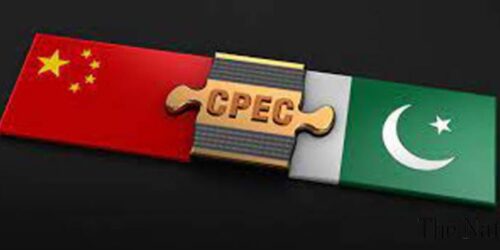The secrecy surrounding CPEC has finally been broken by a team of researchers in the US who have laid bare a massive dataset of over 13,000 projects across 165 countries worth a staggering $843 billion. For ten years the team tracked China’s overseas deals in the Belt and Road Initiative. Pakistanis can now, thus, get a sense of the full scale of Chinese investment in their country. Senior research scientist Dr Ammar A Malik and Sheng Zhang are part of the team of researchers at AidData at the college of William and Mary in Virginia, US who have been tracking China’s activities for about the last decade. They wanted to see what kind of financing China is undertaking in the world. Why is it financing the projects, what are their details, how many of them are loans and how many are grants. Which sectors is China investing in? Which countries is it investing in?
“Our team’s purpose is to survey China’s global development financing and update the data every year so people can tell what kind of Chinese investment is coming into their country and which sectors is this money being put into,” Dr Ammar told SAMAA Digital in a video interview last week.
2.0 version of its flagship Chinese Global Development Finance Dataset. The researchers provide granular details on exact locations, financing mechanisms, implementing partners, terms and conditions etc., in a “treasure trove of unprecedented information” to help analysts see through the “secrecy that has shrouded China’s overseas engagements”. A White Paper titled “Banking on the Belt and Road” provides original analysis on global trends, challenges and opportunities related to China’s dramatic expansion of overseas development financing.
So if you look at it from any angle, you can clearly see that Pakistan is a friendly country for China,” Dr Ammar said. “China has pursued an overwhelming number of projects in Pakistan.” From 2000 to 2017, it started 227 projects in Pakistan and committed $34.4b in development finance. “People used to think that most of these projects were agricultural,” said Dr Ammar. “But our investigation shows that about 58% alone is energy, being invested in electricity. And 24% is transportation, highways, rail and very little money is being put into health and education.”
For the last few years, at the international level, China and America have been at loggerheads. Both countries have been trying to expand their influence in the world. One major way to do this is to make projects available to poor and developing countries.
In 2000, the Chinese government announced a “going out” strategy. It started giving loans outside China. “In the last 18 years, according to our estimates,” says Dr Ammar, “China has invested $840 billion across the world in development projects alone—meaning projects which improve people’s lives, such as ones on power, water, schooling, health.”
This financing has gone up so much that it is roughly $85 billion from China every year, which is double what the US invests. “This means that through this China is trying to overtake the US in terms of influence,” he said. “Africa is included in this, Asia, Central Asia states and even South American countries.”
Pakistanis will be surprised perhaps to learn that 80% of Chinese spending is in the form of loans at or near commercial rates. Only 12% of the money China is giving Pakistan is in grants that do not need to be repaid. There are 71 projects worth $27.3 billion currently underway, making Pakistan China’s most active development finance recipient.
“What is significant is that most of this money is coming in the shape of loans,” says Dr Ammar. Some of the money is in the shape of grants. Grants is funding in which you are not expected to return the money. Pakistan has received over $4 billion in grants. So the rest, $27 billion to $28 billion are in loans.
In earlier decades Pakistan was used to American funding which tended to be in software sectors such as education, women’s literacy, human rights, governance. But China’s way of working is slightly different. It focuses on hard infrastructure and this money is not given in a fixed way: 80% of the money is in the shape of loans.





